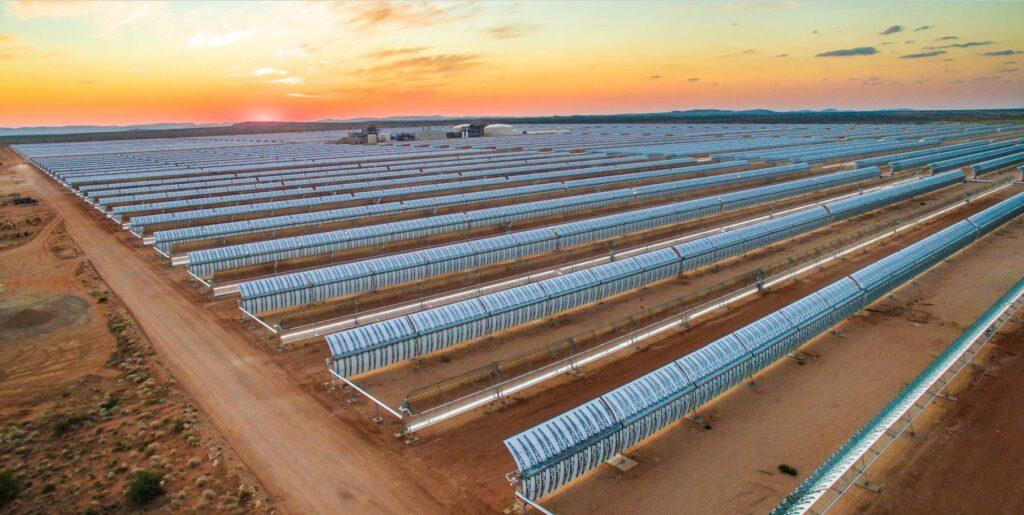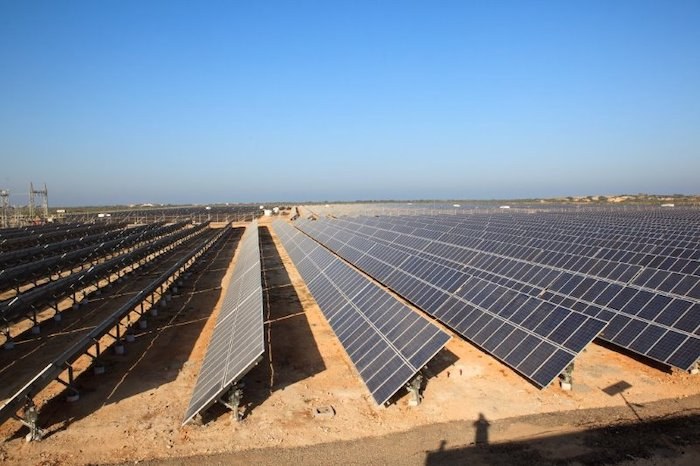Decarbonization aims to lower the amount of CO2 emitted from human activity, with the ultimate goal of eliminating all human-made CO2 emissions in their entirety.
The impetus for decarbonization is the Paris Agreement, the international treaty adopted in 2015 with ambitions to limit global warming to 1.5 degrees Celsius from pre-industrial levels. To meet climate targets set by the Paris Agreement, many countries and organizations across the world have been adopting and implementing decarbonization strategies to help them reach ‘net zero’ by 2050. Net zero essentially means the reduction of all carbon emissions to zero, with any unavoidable emissions balanced out by the absorption or reduction of an equivalent amount of CO2 elsewhere.
Reducing greenhouse gas emissions will curb global temperatures, which have been steadily increasing since the Industrial Revolution and rising at a rate of 0.20 degrees Celsius every decade since 1982. The ten warmest years on record have all occurred within the last decade, with 2023 being the hottest. Rising global temperatures have caused extreme weather, rising sea levels, ecosystem disruptions, and threats to food, water, and health. These impacts destabilize economies, worsen inequality, and displace communities, posing a serious threat to both people and the planet.
While reducing our use of fossil fuels is the best way to meet the goals of the Paris Agreement, the Intergovernmental Panel on Climate Change (IPCC) has stipulated that removing carbon from the atmosphere also has to be an intrinsic part of decarbonization strategies. The CO2 that is already in the air can remain in the atmosphere for centuries, affecting the climate.
Businesses play an important role in global decarbonization -- without them it is simply not possible. While individuals should do their best to minimize their own carbon footprint and governments should enact policies that incentivize and mandate reduction in greenhouse gas emissions, it is absolutely vital for businesses to voluntarily decarbonize. This needs to be done in order for the world to meet the goals set out by the Paris Agreement.
This is especially true for large companies. The Intergovernmental Panel on Climate Change (IPCC) found that around 70 percent of all human-caused carbon dioxide emissions come from just 100 companies worldwide.
There is an ethical responsibility for companies to lower their emissions, and many companies across the world have set goals to become net zero within the coming decades. Decarbonization is absolutely critical for achieving net zero, and this will require an incredible overhaul of systems, supply chains, processes, and more to make them carbon-free.
The process of decarbonization is twofold. The first aspect concerns the reduction of carbon dioxide generated by fossil fuels. The second involves removing carbon that is already in the atmosphere.
A key component of decarbonization is reducing the amount of CO2 released into the atmosphere. Companies contribute to carbon reduction through various strategies and activities, including:
Each of these strategies can contribute to a significant reduction in a company's carbon footprint.
The other component of decarbonization involves removing carbon dioxide already in the atmosphere, which can be achieved through nature-based removal solutions and engineered removal solutions.
Nature-based solutions leverage natural ecosystems to absorb and store carbon while also promoting biodiversity and ecosystem health. These include:
Engineered carbon removal approaches use technology to capture and store CO₂ from the atmosphere. These include:
These engineered solutions aim to complement nature-based removal methods to significantly reduce atmospheric CO₂ levels. By utilizing removal and reduction strategies, we will achieve the net zero ambitions outlined by the Paris Agreement.

There are many benefits to decarbonizing a business. Decarbonizing can lead to greater cost-efficiency and financial stability by switching from fossil fuels to renewable energy, especially as markets begin to favor renewables.
This in turn can lead to an improved public image, which can foster continued customer loyalty. Studies have found that some 45 percent of the general public would choose products or services from companies that measure their carbon footprint rather than those that do not. Consumers are now also expecting more action on climate change from companies and for them to be moving towards net zero.
In addition, decarbonization initiatives can boost employee morale and attract talent, while also meeting the growing expectations of shareholders for sustainability and social responsibility. Investing in sustainable technologies and practices drives innovation and can give companies a competitive edge in emerging green markets.
Proactively reducing carbon emissions also helps companies comply with increasing regulations and avoid potential fines or penalties related to carbon taxes or emissions limits, while also addressing long-term climate-related risks.
The rate at which companies should be decarbonizing varies from industry to industry, as well as by each company’s individual emissions targets.
PwC’s Net Zero Economy Index, however, suggests a year-on-year global decarbonization rate of 17.2 percent is needed to meet the goals of the Paris Agreement. This would be an increase of more than 12 times the average yearly decarbonization level from the last twenty years.
Unfortunately, no G20 nation has been able to meet the required decarbonization level since the year 2000. Now more than ever it is vital for every organization to do their part in decarbonizing so that we can limit global warming to 1.5 degrees Celsius from pre-industrial levels.
Despite its necessity for mitigating climate change, decarbonization faces a number of challenges that make it complex and gradual:

Steel, cement, and petrochemicals are among the top carbon emitting industries and are also the most difficult to decarbonize. Altogether industrial emissions account for about 30 percent of the world’s greenhouse gas emissions. There are numerous reasons for this, one is that these industries all need an enormous amount of heat to produce their products, which makes them inherently reliant on a lot of energy.
The process for creating cement, for example, involves heating limestone to extreme temperatures. Aside from the energy needed to reach those temperatures, the process also releases carbon from the stone, which becomes CO2 when it enters the atmosphere. It is an unavoidable part of producing cement.
There are economic reasons as well. Many of these industries tend to have slim profit margins and to decarbonize could be slow and costly if not done correctly.
None of this means it is impossible to decarbonize these hard-to-abate industries. What it does mean is that it will be a challenge. It is important to note that the goals of the Paris Agreement likely cannot be met without industrial decarbonization. To do this requires innovation and the funding of new technologies and research.
Link your business decisions with sustainability goals
Whenever business decisions are made ensure your company’s sustainability and decarbonization goals are brought into the mix early on and are a priority, not an afterthought.
Involve stakeholders
Engage your investors, clients, and employees with your decarbonization goals.
Seek out partnerships with those who are also decarbonizing
Team up with clients, suppliers, or investors who are also decarbonizing their businesses.
Track your progress
Use data to monitor your progress and share that data with your stakeholders. Transparency creates trust and further incentive for progress.
Allow your strategy to change
The low-carbon economy is constantly changing. Allow your decarbonization strategy to change with it. Revisit your goals and processes and update them as new technologies and breakthroughs become available.

Decarbonizing the energy grid is a key part of reaching net zero emissions by 2050. This essentially means moving away from fossil fuels as our key source of energy and instead using renewables and low-emissions fuels as the primary source.
Decarbonizing the energy sector has become a top priority for governments across the world. Both the United Kingdom and the United States have announced plans to decarbonize their country’s power systems by 2035. Some studies have found that the US will have reduced 40 percent of its power sector emissions by 2030. The UK is doubling down on offshore wind, hydrogen and solar, nuclear, and carbon capture and storage technologies to meet its targets.
A report from McKinsey found that decarbonizing 50 to 60 percent of the power system by 2040 could be done relatively easily. McKinsey points to the falling costs of solar and wind power as well as carbon storage. So much so that decarbonizing has become the most cost-effective option in many circumstances. Reaching 80 to 90 percent by 2040 would be more expensive and complicated but could be achieved through additional market-specific actions and more active management.
The decarbonization of the entire power system by 2040, however, would be the costliest and would have to rely on new technologies, such as biofuels, carbon capture and storage, bioenergy, power to gas to power technology, and direct air capture.
According to a study from Oxford University, decarbonizing our energy system by 2050 would save the world at least USD $12 trillion compared to if we maintained the current levels of fossil fuels.
The study points to the falling costs of clean energy, which has dropped far faster than expected. It also suggests the costs for storage technologies like batteries and hydrogen electrolysis are likely to fall even further in the coming years.
An additional contributing factor to this is that renewable energy markets are generally less susceptible to the same volatility as fossil fuel markets. Fossil fuels can experience extreme price increases due to geopolitical events that cause supply disruptions. For example, after Russia’s invasion of Ukraine, gas became nine times more expensive than renewables. Renewables are less influenced by geopolitical tensions, as they do not rely on imports from unstable regions, reducing the risk of supply disruptions.
Decarbonizing the energy grid offers additional substantial cost savings through several key benefits. Renewable energy sources, like solar and wind, have low operational and maintenance costs compared to fossil fuels, which involve ongoing fuel expenses. Reducing fossil fuel use also lowers healthcare costs associated with air pollution and decreases environmental damage, avoiding costly cleanup and adaptation. Improved energy efficiency and storage systems further reduce overall energy costs. Investment in renewables also stimulates job creation, supporting economic growth and offsetting some transition costs. Overall, these factors contribute to long-term financial benefits from a decarbonized energy grid.
Low-carbon fuels can serve as an important bridge in the transition to full decarbonization by providing a transitional step between high-carbon fossil fuels and zero-carbon energy sources. Low-Carbon fuels are energy sources that produce minimal or no carbon emissions.
For example, long claimed to be the “cleanest” of the fossil fuels, natural gas emits half of the CO2 that coal does and only a tenth of the air pollutants. If industrial companies switched to natural gas they would see an almost immediate reduction in their carbon footprint. Other low-carbon fuels include hydrogen, biofuels, and biogas.
Low-carbon fuels can often be used with existing infrastructure and vehicles, allowing for a smoother transition without requiring immediate and costly changes to energy systems. While renewable energy technologies like wind and solar are scaling up, low-carbon fuels can help address emissions in sectors that are harder to electrify, such as aviation, shipping, and heavy industry.
The development and use of low-carbon fuels can drive innovation and improvements in technology, paving the way for future advancements and broader adoption of zero-carbon energy sources. Low-carbon fuels can also support industries and workers transitioning from fossil fuels, providing economic stability and continuity during the shift to more sustainable energy systems.
Low-carbon fuels have become a major part of many countries' plans for industrial decarbonization. The United States has laid out plans for a series of massive green hydrogen hubs to produce hydrogen fuel for industrial processes like steel and cement manufacturing.
Overall, low-carbon fuels play a crucial role in bridging the gap to a fully decarbonized energy system. However, if we are to use low-carbon fuels, we have to do so with the goal of eventually switching completely to renewables.
Absolute emissions targets are defined and rigid goals for reducing greenhouse gas emissions, while intensity emissions targets are more flexible and take into account a variety of economic factors including growth, industry, and supply chains. Absolute emissions targets are more often favored by politicians and governing bodies, for instance the Paris Agreement sets the hard target of keeping global warming under 1.5 degrees Celsius.
While absolute emissions targets are commendable, they do not take into account the specific challenges various industries and sectors might face in meeting those targets. Factors such as the complexities inherent in global supply chains, or the cost required for certain industries to decarbonize. Some of these factors can often make absolute emissions targets unfeasible.
Intensity emissions targets instead measure an organization's reduction in greenhouse gas emissions in relation to these challenges. They allow businesses to create reduction goals while also sustaining growth. These targets can then evolve with a company if it, for instance, undergoes a merger, is acquired, or has a disruption in its supply chain or processes.
While all of this is beneficial to the company, unfortunately intensity emissions targets do not ensure enough of a reduction in CO2 emissions. They could even allow for companies to emit more if they expand.
It is hoped that the process of decarbonization will eventually eliminate all emissions entirely. This would mean a revolutionary change to fossil-fuel dependent industries like energy, transportation, construction, and agriculture. While progress is certainly being made, and we have seen the political will for it growing alongside the environmental movement, there is still a long way to go.
The Paris Agreement, a treaty that 196 parties signed in 2015, legally binds many of the world’s biggest CO2 emitting nations to limiting global warming well below 2 degrees Celsius and to pursue efforts to limit it to 1.5 degrees Celsius. In order to achieve this, greenhouse gas emissions must peak by 2025 and decline 43 percent by 2030.
The goals set by the treaty require decarbonization across all industries. It necessitates in the simplest terms a monumental effort from nearly every party. Fortunately, mankind has never been afraid of achieving monumental goals.
Net zero is the state where all greenhouse gases produced by human activity have been negated. This means all CO2 emissions have been reduced and carbon absorption and storage projects have been implemented to remove CO2 from the atmosphere. Decarbonization is therefore required to reach net zero.
Decarbonization is how companies, organizations, and governments will reduce their carbon footprint and greenhouse gas emissions. Decarbonization is the process, net zero is the goal.
After carbon dioxide, methane is the most consequential greenhouse gas when it comes to climate change. Methane has 28 times greater global warming potential than carbon dioxide over a 100-year timeline. The gas is also responsible for 30 percent of the global temperature rise since the industrial revolution. We cannot limit the warming of the planet to 1.5 degrees Celsius without seriously reducing the amount of methane released into the atmosphere.
The agricultural industry emits roughly a quarter of all global methane emissions making it the largest sector to do so. This is followed by the energy sector which includes coal, oil, natural gas, and biofuels.
“Energy transition” describes the current movement to shift where we get our energy from, moving away from fossil fuels like oil, natural gas, and coal and towards renewables like wind and solar, as well as lithium-ion batteries. Decarbonization is part of the process of fulfilling the goals of the energy transition. To achieve the energy transition the energy sector has to decarbonize.
While there are upfront costs for transitioning to low-carbon technologies, decarbonization can lead to long-term cost savings, job creation in green industries, and improved economic resilience by reducing reliance on fossil fuels.
The timeline for decarbonization depends on several factors, including technological advancements, government policies, corporate action, and public support. While no single timeline fits all sectors, global decarbonization is generally expected to take decades.
We need carbon accounting to quantify and manage greenhouse gas emissions, ...

Carbon neutral and net zero are two terms often used interchangeably, but t...

Understanding scope emissions helps companies identify their environmental ...
